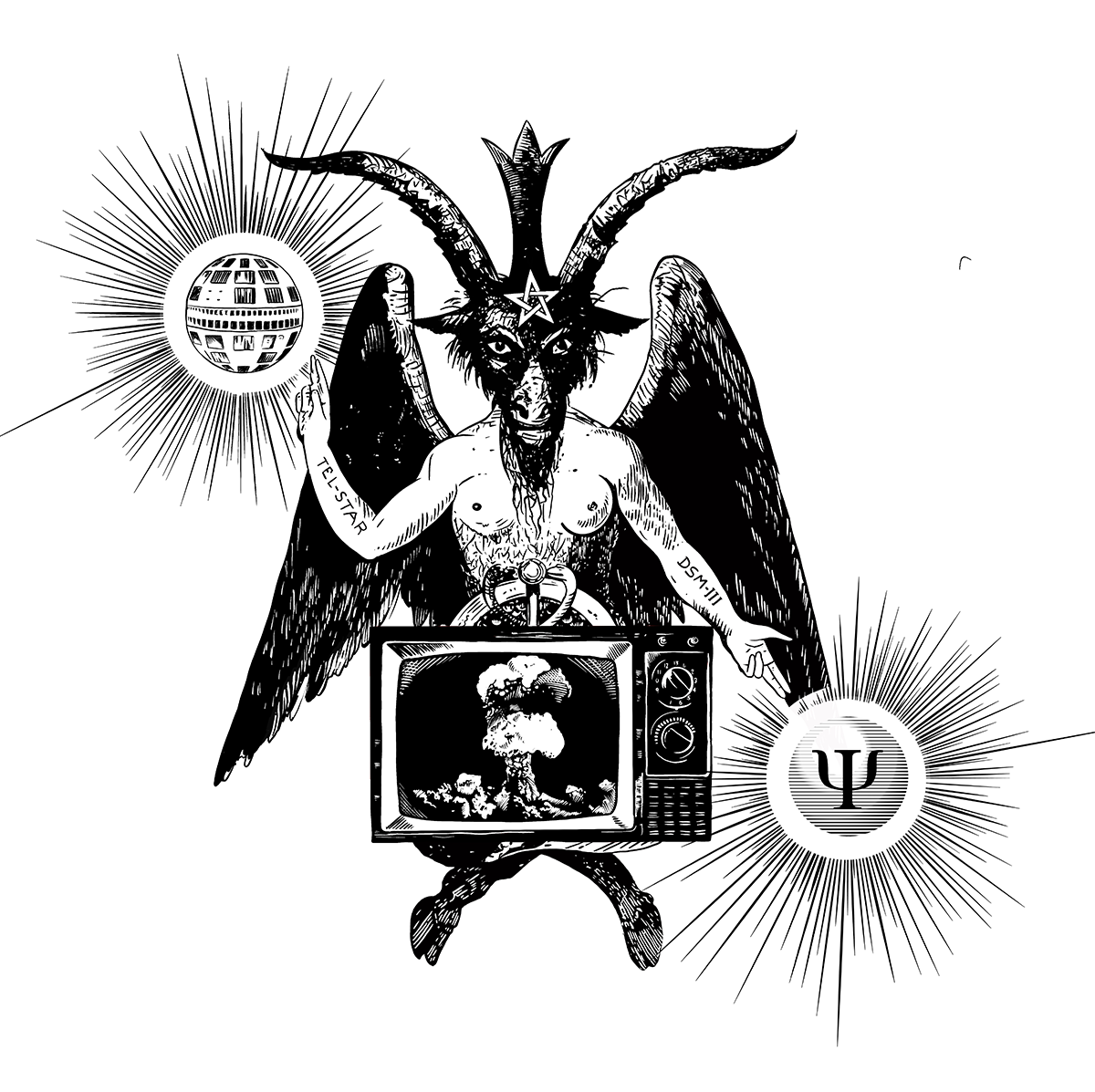In 2015, I set out trying to make a three-minute YouTube video about the 1980s Satanic Panic. But as I read more deeply into the topic, what was at first an opportunity to chuckle at the excesses of the American evangelical right revealed itself to be a microcosm of a much bigger story. Humanity’s response to the unprecedented technological, cultural and spiritual transformations of the 20th century. Seven years later it culminated in the three-hour documentary; Deify Error.
After its completion, I started a new project. Originally conceived of as a book, is an attempt to create a series of video essays covering the major epochs of media history, including the oral-mnemonic technology of prehistory, the emergence of cities and writing, print, and the emergence and expansion of electronic and digital media. It is almost by its nature also a history of ideas, particularly religious ideas and the role they played in propagating, maintaining, and envisioning each iteration.
Apocalyptic Cults and the Early Modern Information Explosion
This is the story of the first great information explosion and the cults and radicals that powered it forwards. The massive growth in literacy following the invention of the printing press led to artistic and intellectual ferment, as well as political turmoil, extremism, and political polarisation. No longer was mass communication dominated by popes, kings, and priests, but was joined by the voices of countless thousands of everyday people, who were sick of the corruption and hypocrisy of the elites.
This flood of these new voices in the form of books and then pamphlets disturbed the mind of whole populations, in exposing them to perspectives and possibilities beforehand inconceivable. It was a time of society-wide confusion — from the Latin confusionem meaning to mingle and muddle together — of different theological perspectives at first, then more and more fragments of news, rumour and scaremongering from across Christendom and the expanding world. Suddenly the seemingly eternal certainties of Church doctrine began to crumble, leading to peasant rebellions, uprisings, and civil wars.
As the legitimacy of popes, kings and statesmen imploded and wars and schisms multiplied, there came to be a growing sense that the world was falling apart and that a new one was on the cusp of being born. Amidst this turbulence, prophecies went viral — with whole swathes of the population coming to the belief that the reason for the chaos was the imminence of Christ’s return to establish His eternal kingdom. Radical movements appeared from nowhere and came to guide the fates of cities and nations, transforming the history of Europe and ultimately reshaping culture and human cognition.
Deify Error
Technology, Faith and the 20th Century
Taking place against the backdrop of the massive technological and cultural changes of the late 20th century, and shown through the eyes of evangelical Christians, Deify Error is about collective myth-making as we struggle to comprehend a world beyond our individual understanding. Tying together themes from mass psychology, the global mass media, new religious movements, psychic contagion, and the psychiatric industrial complex, it is about the stories we tell ourselves, the illusions we conjure, and the industries that emerge to perpetuate them. It is about how ancient human behaviors are magnified by new technology at the same time as they are transformed by them. It is about the end of the world and the birth of a new one.
Part 1: False Prophets
An exploration of the modern origins of the satanic cult folklore amidst the backdrop of the atomic bomb and the ruins of WW2. The Cold War had cultivated an atmosphere of paranoia about secret networks of godless Soviet infiltrators which would slowly fuse with an assortment of pop-culture tropes, from as the next-door-neighbour satan worshippers of Rosemary’s Baby and the theatrical Church of Satan, to real-life atrocities committed by the cults of Charles Manson and Jim Jones. By the end of the 70s, the satanic cult had become a titillating cliche, permeating shlock horror and pulp fiction, influencing a generation of artists and rock stars. And as the 80s loomed, so began a frosty dance between the religious right and psychotherapy as the latter profession slowly usurped the former's cultural role as chief clerics, inquisitors, and exorcists of society's demons.
Part 2: Explosive Amplification
Since the end of the Second World War there had been a revival amongst Christian conservatives of ancient "subversion myths" to explain the titanic technological and cultural changes that surrounded them. Drawing on the aesthetics of 70s horror films and the dubious testimonies of evangelical preachers, they assembled an elaborate mythology about secret networks of murderous devil-worshipping cults that lurked behind the idyls of suburban life, and who were secretly controlling society in order to bring about the age of the Antichrist. But in the early 1980s, books such as Michelle Remembers and TV specials launched these fringe ideas into the heart of popular culture, and their validation on the medium seemingly corroborating their worst fears. In fact, it was a vast media feedback loop, in which a self-referential mythology expanded and grew through more and more communication networks. Part 2 of Deify Error looks at the anatomy of this moral panic, who was involved, how it happened, and what the social consequences were of this modern-day witch-hunt.
Part 3: Family of Origin
As traditional religion began to decline, psychotherapy combined the intellectual trappings of science with the soul-doctor role of the priest. But evangelicals were still keen to draw parallels to new conditions such as Multiple Personality Disorder with demon possession or the sadism of satanic cults. During the course of the 1980s, two divergent intellectual traditions fused in the belief in the existence of devil worshippers who could deliberately brainwash people to create malevolent “alter” personalities; a secular demon. This in turn would combine with the private healthcare industry and child protection services create a vast . This is what happens when beliefs in folk demonology fuses with the cultural authority of the new secular clerisy. Viewer discretion is advised.






